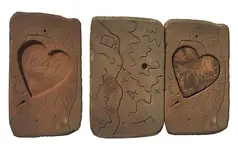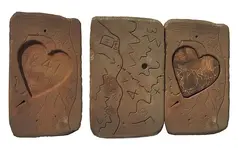http://en.wikipedia.org/wiki/Taos_Revolt Taos Revolt
From Wikipedia,
Taos Revolt
Part of the Mexican-American War
The Siege of Taos, depicting U.S. Cavalry officer John Burgwin's death.
Date January 19-July 9, 1847
Location Northern New Mexico, United States
Result United States victory
Belligerents
United States Mexico
Commanders
Sterling Price
John Burgwin†
Ceran St. Vrain
Israel R. Hendley†
Jesse I. Morin
Pablo Chavez†
Pablo Montoya†
Jesus Tafoya†
Tomás Romero†
Manuel Cortez
Casualties and losses
19 killed,
~70 wounded ~100 killed,
~250 wounded,
~400 captured
Civilian Casualties: ~20 killed
New Mexico and Arizona Campaign
Mexican-American Conflict
Capture of Santa Fe - Capture of Tucson - Battle of El Brazito
Taos Revolt
Battle of Cañada - First Battle of Mora - Battle of Embudo Pass - Second Battle of Mora - Siege of Pueblo de Taos - Battle of Red River Canyon - Battle of Las Vegas - Battle of Cienega Creek
Mexican-American War
Thornton Affair – Fort Texas – Palo Alto – Resaca de la Palma – Olompali – Monterey – Santa Fe – Monterrey – 1st Tabasco – Los Angeles –Chino – Dominguez Rancho – Natividad – San Pasqual – Tucson – El Brazito – Rio San Gabriel – La Mesa – Cañada – 1st Mora – Embudo Pass – 2nd Mora – Pueblo de Taos – Buena Vista – Sacramento River – Veracruz – Cerro Gordo – 1st Tuxpan – Red River Canyon – 2nd Tuxpan – 2nd Tabasco – 3rd Tuxpan – Las Vegas – Cienega Creek – Contreras – Churubusco – Molino del Rey – Chapultepec – Mexico City – Puebla – Mulege – Huamantla – Punta Sombrero – 1st La Paz – 1st San Jose del Cabo – 2nd La Paz – 2nd San Jose del Cabo – Santa Cruz de Rosales
This article includes a list of references, related reading or external links, but its sources remain unclear because it lacks inline citations. Please improve this article by introducing more precise citations where appropriate. (June 2010)
The Taos Revolt was a popular insurrection in January 1847 by Mexicans and Native American allies against the United States' occupation of present-day northern New Mexico during the Mexican-American War. In two short campaigns, United States troops and militia crushed the rebellion of Mexicans and their Pueblo allies. The rebels regrouped and fought three more engagements, but were defeated and abandoned their open warfare.
1 Background
2 Revolt
2.1 Taos Massacre
2.2 Arroyo Hondo and Mora massacres
2.3 United States' response
2.4 Aftermath
2.5 Further fighting
3 See also
4 References
Background
In August 1846, the territory of New Mexico, then under Mexican rule, fell to U.S. forces under Stephen Watts Kearny. Governor Manuel Armijo surrendered at the Battle of Santa Fe without firing a shot. When Kearny departed with his forces for California, he left Colonel Sterling Price in command of U.S. forces in New Mexico. He appointed Charles Bent as New Mexico's first territorial governor.
Many New Mexicans were unreconciled to Armijo's surrender and resented treatment by some U.S. soldiers.
"As other occupation troops have done at other times and places have done, they undertook to act like conquerors." Gov. Bent implored Col. Alexander Doniphan, Price's superior, "to interpose your authority to compel the soldiers to respect the rights of the inhabitants. These outrages are becoming so frequent that I apprehend serious consequences must result sooner or later if measures are not taken to prevent them.[1]
More significantly than the daily insults, many New Mexican citizens feared that their land titles, issued by the Mexican government, would not be recognized by the United States. They worried that American sympathizers would prosper at their expense. Following Kearny's departure, dissenters in Santa Fe plotted a Christmas uprising. When the plans were discovered by the US authorities, the dissenters postponed the uprising. They attracted numerous Native American allies, who also wanted to push the Americans from the territory.
Revolt
Taos Massacre
On the morning of January 19, 1847, the insurrectionists began the revolt in Don Fernando de Taos, present-day Taos, New Mexico. They were led by a Mexican, Pablo Montoya, and a Taos Pueblo, Tomás Romero, also known by the New Mexicans as Tomasito (Little Thomas).
Romero led a Native American force to the house of Governor Charles Bent, where they broke down the door, shot Bent with arrows, and scalped him in front of his family. After they moved on, Bent was still alive. With his wife Ignacia and children, and the wives of friends Kit Carson and Thomas Boggs, the group escaped by digging through the adobe walls of their house into the one next door. When the insurgents discovered the party, they killed Bent, leaving the women and children unharmed.
The Indians killed and scalped several other government officials, along with others seen as related to the new US territorial government. Among those killed were Stephen Lee, acting county sheriff; Cornelio Vigil, prefect and probate judge; and J.W. Leal, circuit attorney. "It appeared," wrote Colonel Price, "to be the object of the insurrectionists to put to death every...[m]an who had accepted office under the American government."[citation needed]
Arroyo Hondo and Mora massacres
The next day a large armed force of approximately 500 Mexicans and Indians attacked and laid siege to Simeon Turley's mill in Arroyo Hondo, several miles outside of Taos. Charles Autobees, an employee at the mill, saw the men coming. He rode to Santa Fe to get help from the occupying US forces. At the mill eight to ten mountain men were left for defense. After a day-long battle, only two of the mountain men, John David Albert and Autobees' half brother Thomas Tate Tobin, survived. Both escaped separately on foot during the night. The same day Mexican insurgents killed seven American traders who were passing through the village of Mora, New Mexico. At most 15 Americans were killed in both actions on January 20.
United States' response
The US military moved quickly to quash the revolt; Col. Price led more than 300 U.S. troops from Santa Fe to Taos, together with 65 volunteers, including a few New Mexicans, organized by Ceran St. Vrain, the business partner of William and Charles Bent. Along the way, the combined forces beat back a force of some 1,500 Mexicans and Native Americans at Santa Cruz de la Cañada and Embudo Pass. The insurgents retreated to Taos Pueblo, where they took refuge in the thick-walled adobe church. During the ensuing battle, the US breached a wall of the church and directed cannon fire into the interior, inflicting many casualties and killing some about 150 rebels. They captured 400 more men after close hand-to-hand fighting. Only seven Americans died in the battle.[2]
A separate force of US troops under captains Israel R. Hendley and Jesse I. Morin campaigned against the rebels in Mora. The First Battle of Mora ended in a New Mexican strategic victory. The Americans attacked again in the Second Battle of Mora and won, which ended the operations against Mora.
Aftermath
US officials ordered the execution of some of the captives in the plaza the next day in a "drumhead court martial", including the leader "Montojo" [Montoya]. Price then set up a military court in Taos to try more of the captured insurgents under civil law.[2] He appointed as judges Joab Houghton, a close friend of Charles Bent; and Charles H. Beaubien, the father of Narcisse Beaubien, who had been killed on January 19. George Bent, Charles Bent’s brother, was elected foreman of the jury. The jury included Lucien Maxwell, a brother-in-law of Beaubien; and several friends of the Bents. Ceran St. Vrain served as court interpreter. Since the Anglo community in Taos was small and several men had been killed by the rebels, the jury pool was small. The court was in session for fifteen days. The jury found 15 men guilty of murder and treason (under the new US rule), and the judges sentenced them to death.
A contemporary historian and writer, Lewis H. Garrard, described the trial and events:
"It certainly did appear to be a great assumption of the part of the Americans to conquer a country and then arraign the revolting inhabitants for treason. American judges sat on the bench, New Mexicans and Americans filled the jury box, and an American soldiery guarded the halls. Verily, a strange mixture of violence and justice-a strange middle ground between martial and common law. After an absence of a few minutes the jury returned with a verdict, 'Guilty in the first degree.' Five for murder, one for treason. Treason, indeed! What did the poor devil know about his new allegiance? . . .. I left the room, sick at heart. Justice! Out upon the word when its distorted meaning is a warrant for murdering those who defended to the last their country and their homes."[3]
On April 9, the US forces hanged six of the convicted insurgents in Taos plaza; all but one were convicted of murder, and he of treason. This was the first execution by hanging in the Taos valley.[4] Two weeks later, the US forces executed five more. In all, the US hanged at least 28 men in Taos in response to the revolt. A year later, the U.S. Secretary of War reviewed the case. He said that the one man hanged for treason, Pablo Salazar, might have been wrongfully convicted. The U.S. Supreme Court agreed. All other convictions were affirmed.
Further fighting
The revolt did not end. New Mexican rebels engaged US forces three more times in the following months. The actions are known as the Battle of Red River Canyon, the Battle of Las Vegas, and the Battle of Cienega Creek. After the US forces won each battle, the New Mexicans and Native Americans finally ended open warfare.
John David Albert
List of assassinated American politicians
1.^ Lavender, David, Bent's Fort, Garden City, NY: Doubleday and Company, Inc., 1954, p. 273
2.^ a b , Garrard, Lewis H., Wah-to-yah and the Taos Trail; or Prairie Travel and Scalp Dances, with a Look at Los Rancheros from Muleback and the Rocky Mountain Camp-fire, 1850, pp. 214-215; reprint, University of Oklahoma Press, Norman, 1955
3.^ Garrard, Lewis H., Wah-to-yah and the Taos Trail; or Prairie Travel and Scalp Dances, with a Look at Los Rancheros from Muleback and the Rocky Mountain Camp-fire, 1850, pp. 197-198; reprint, University of Oklahoma Press, Norman, 1955
4.^ Lewis H., Wah-to-yah and the Taos Trail; or Prairie Travel and Scalp Dances, with a Look at Los Rancheros from Muleback and the Rocky Mountain Camp-fire, 1850, p. 228; reprint, University of Oklahoma Press, Norman, 1955
Broadhead, Edward, Ceran St. Vrain, Pueblo,Colorado, Pueblo County Historical Society, 2004
Connor, Buck. "Thomas Tate Tobin". (need url and website info) Retrieved 2006-09-17.
Durand, John, The Taos Massacres, Elkhorn, Wisconsin: Puzzlebox Press, 2004
Garrard, Lewis Hector, Wah-to-yah and the Taos Trail, first published in 1850; reprint, Norman, Oklahoma: 1955, University of Oklahoma Press
Herrera, Carlos R., "New Mexico Resistance to U.S. Occupation", in The Contested Homeland, A Chicano History of New Mexico, Albuquerque: University of New Mexico Press, 2000
Moore, Mike. "John Albert: One of Colorado's Own". (need url and website info) Retrieved 2006-09-16.
Niles' National Register, NNR 72.038, March 20, 1847, available at [1]
Perkins, James E. (1999). Tom Tobin: Frontiersman, Herodotus Press. ISBN 0-9675562-0-1. Online book review at Denver Post. (need url)
Simmons, Marc (1973). The Little Lion of the Southwest: a life of Manuel Antonio Chaves, Chicago: The Swallow Press. ISBN 0-8040-0633-4.
Twitchell, Ralph Emerson, The History of the Military Occupation of the Territory of New Mexico from 1846 to 1851, Denver, Colorado: The Smith-Brooks Company Publishers, 1909
Retrieved from "
http://en.wikipedia.org/wiki/Taos_Revolt"
Categories: New Mexico and Arizona Campaign | Massacres by Native Americans | History of New Mexico








 ??
??


